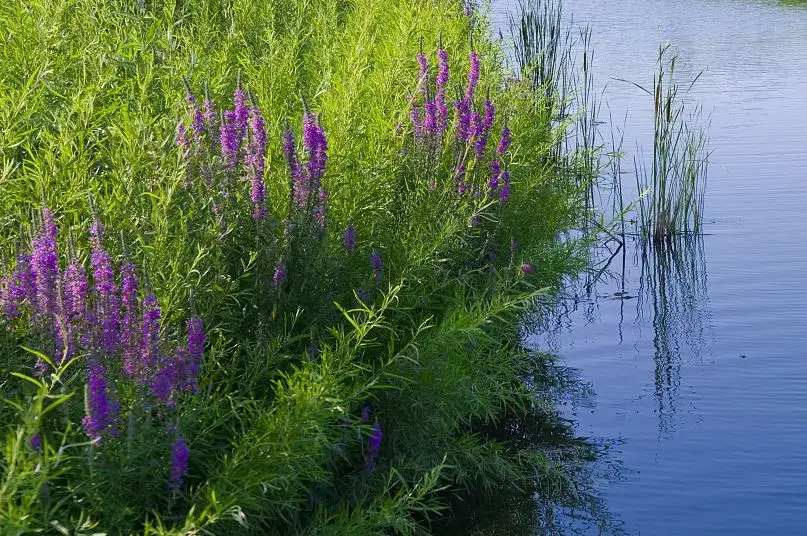It is simple to see why giant knotweed, multiflora rose, and kudzu is considered invasive species in New York and nearby states. These quickly spreading plants encroach on private gardens and are difficult to eliminate and displace native species in uncultivated regions. You may be shocked to learn that a few popular landscape plants have also entered the list of invasive species.

What Is an Invasive Plant?
Non-native or imported species that are so well suited to the surroundings that they thrive, reproduce, and spread quickly are considered invasive plants. They outnumber and outcompete many native species essential to the ecology. Most invasive plants were introduced to the US as ornamentals and are native to Europe and Asia.
Invasive species cannot be collected, sold, transported, distributed, propagated, or transplanted in several Northeastern US states due to laws that have been passed. Existing plants do not have to be removed, but growing new ones is against the rules. Before introducing controlled species to their property, homeowners should consult with their neighborhood Forest or Grasslands office.
Invasive Plants Or Popular Ornamentals From Maine to Pennsylvania
It is surprising to learn that some of the most well-liked landscape plants are invasive. Nonetheless, many species have escaped into the Eastern US’s woods and parks, competing for resources with important native species. These are six invasive plants that you could encounter on your lawn or in your neighborhood:
Black Bush (Euonymus alatus) Burning Bush, a beloved plant for its vivid red autumn leaves, was first offered as an ornamental in the 1860s. It produces a lot of seeds, which birds disperse.
Acer platanoides “Crimson King,” or the Crimson King Maple, The stunning burgundy foliage of this variety of Norwegian maple, makes it a favorite landscaping tree. Two-winged helicopters may easily self-seed Crimson King maples.
Typical Privet (Ligustrum obtusifolium) Privet, brought over from Asia, is a common plant in the maze, labyrinth, and knot gardens. It was originally used for hedgerows. Birds and root shoots distribute the seeds of common Privets.
Asian Barberry (Berberis thunbergii) Japanese Barberry, valued for its vivid red or orange autumn leaves, was first introduced as an ornamental in the late 1800s. It has escaped into woodlands, which are home to significant black-legged tick populations.
Honeysuckle in Japan (Lonicera japonica) Japanese Honeysuckle was originally introduced to prevent erosion and for its fragrant blossoms, but it has already spread over the Northeast. It is advised to identify it to separate it from American Honeysuckle since the latter has a twining growth habit that enables it to develop into thick mats and cover trees.
Operating Bamboo (Phyllostachys aurea) One of the invasive grasses that residents in the Northeast have grown to enjoy is running Bamboo, which was first brought to the US in the 1880s. Bamboo quickly grows through subterranean rhizomes, making it a popular choice for privacy screens and noise reduction.
Northeast and New England Invasive plants
Use care while removing invasive species from the garden or garden, regardless of whether they were inadvertently introduced or established on the land. Seeds and rhizomatous roots may not be destroyed by composting or shredding. Moreover, recycling facilities for yard debris could not take these plants.
Homeowners should contact their local Extension offices if they need assistance identifying or properly removing invasive plant species. The following species may be controlled as invasive plants in the Northeastern US states:
- Tree of Heaven (Ailanthus altissima)
- Garlic Mustard (Alliaria petiolata)
- European Black Alder (Alnus glutinosa)
- European Barberry (Berberis vulgaris)
- Oriental Bittersweet (Celastrus orbiculatus)
- Spotted Knapweed (Centaurea stoebe)
- Black Swallow-wort (Cynanchum louiseae)
- Pale Swallow-wort (Cynanchum rossicum)
- Autumn Olive (Elaeagnus umbellata)
- Glossy Buckthorn (Frangula alnus)
- Reed Sweet Grass (Glyceria maxima)
- Amur Honeysuckle (Lonicera maackii)
- Moneywort (Lysimachia nummularia)

